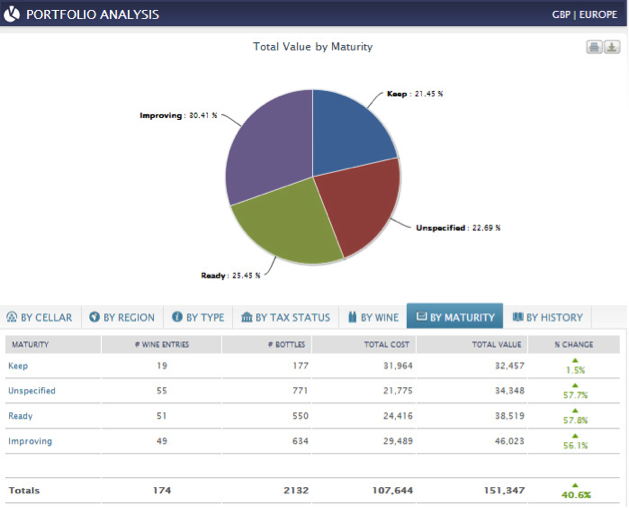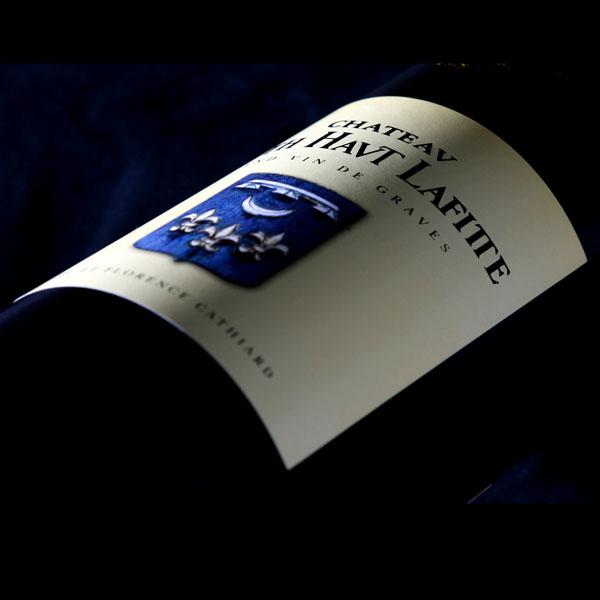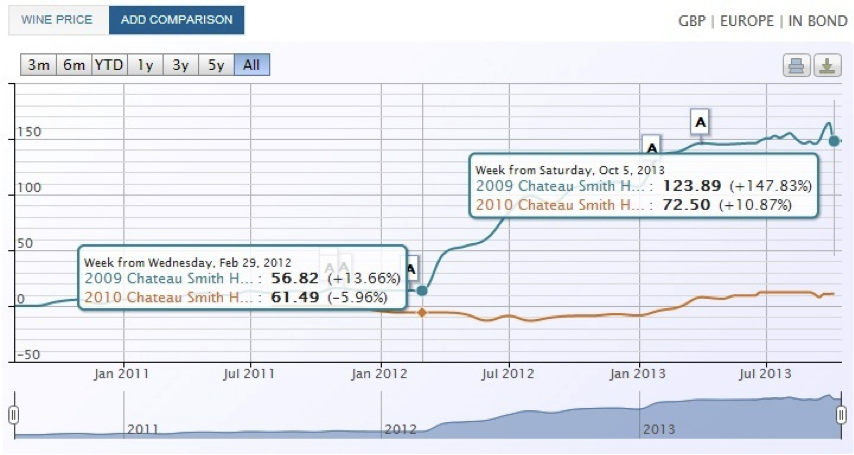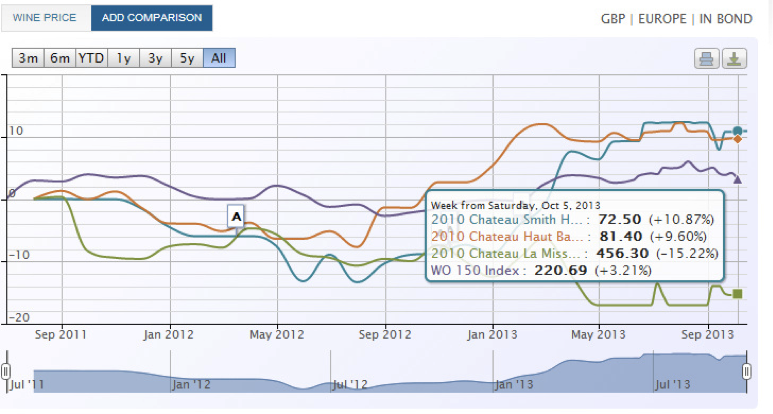by Wine Owners
Posted on 2013-10-30
One of the pitfalls of collecting is knowing when to pull a case out of storage, and making sure that older stocks don’t linger unappreciated until past their prime. Your Wine Owners Portfolio allows you to sort wines by maturity, so you can decide what to bring out of storage for drinking, what to keep, and what you might wish to sell on. The drinking dates are backed up by over 100,000 reviews, so you can keep up to date with professional appraisals of your wines.

Bordeaux
In younger vintages, it’s about possible to start drinking 2001, 2002, & 2004. 2001 and 2004 have a reasonable amount in common, being both classically styled wines without the opulence or longevity of 2000 and 2005. Useful in this case to refer back to Jancis Robonson’s FT article (2 Apr 2011), which sets out the case for 2001 as a useful ‘forgotten’ vintage. 2001 Chateau Grand Puy Lacoste Pauillac 5eme Cru Classe AOC, rated highly in that article and with a market price of £423 seems like a particular steal, perhaps because Robert Parker’s rating, so often a market driver for Bordeaux prices, is quite low. The vast majority of the 2005s on the left bank are still developing, certainly so at First and Second Growth level.
Vintages from the mid-nineties are subject to growing demand, as these wines enter their prime drinking window. 95s and 96s in particular are beginning to turn serious – try Chateau Calon-Segur St Estephe 3eme Cru Classe AOC 1995 for a well priced example.
For those who don’t have a taste for the very tertiary, Bordeaux from the good mid-eighties vintages should be starting to get finished up now. Most 85’s, and certainly 86’s and 88’s, except at the very top level are getting close to the beginning of decline, and are better off on the table now than spending another few years in the cellar.
Burgundy
Aged Burgundy is notoriously difficult to source, but for those who already have it in their cellars, drinking dates are heavily vintage dependent. Collectors with 2007s in the the cellar, below Grand Cru level, can start to look at those wines now, with many showing an extremely fresh and vibrant character now, perfect for those who like an early drinking, energetic style.
Domaine Comte Georges de Vogue Chambolle Musigny Premier Cru AOC 2007
Older vintages, if you can find them, that are beginning to show well include 2002, and 1999: try Hospices de Beaune Corton Cuvee Charlotte Dumay Grand Cru AOC 1999 as an example of a Corton that should be drinking superbly now.
Champagne
Plenty of merchants and supermarkets will be gearing up for Christmas offers around Champagne in the next month, but the best way to be prepared is to start a year in advance. Most NV bottlings will seriously benefit from a further year in the cellar, so if you have the space to keep roughly 12 months stock of champagne and top up as you go, that’s the best way to make sure you’re drinking the wine at its peak.
At vintage and prestige cuvee level, 1996 and 1999 wines are both beginning to come into their own, with Moet & Chandon Dom Perignon Champagne 1999 showing particularly well recently.
With over 100,000 reviews available for more than 145,000 fine wines, we think Wine Owners offers a great solution to keeping track of your wines with over £37,000,000 of stock under management.
by Wine Owners
Posted on 2013-10-18

Comparing the 2009 and 2010 vintages of the overachieving Chateau Smith Haut Lafitte shows how vintage styles can make a huge difference to market value. The massive and opulent 2009, which wins a perfect score from Robert Parker, is by no means a huge qualitative improvement on the slightly lower rated 2010. In fact, as we’ll see, plenty of reviewers prefer the 2010.
The obvious feature of the price comparison below is that the market price of the 2009 with its 100 point rating from Robert Parker has risen by well in excess of 100%, while the 2010, which gained a few points on its initial rating (95-97, rerated to 98+), has remained steady at close to release price.

One point to take away is that a very good re-rating is not enough to take a price higher in the current market unless it is a perfect rating. While this may be disappointing for those who bought 2010 and not 2009, it does mean the 2010 is considerably less expensive to buy now, in what is a relatively low market. Considering Neal Martin, Wine Enthusiast and Jancis Robinson all rate the 2010 higher than the 2009, albeit marginally, it certainly seems the better buy of the two vintages with a market value of £870 against 2009’s £1,487. For a price conscious buyer, the prospect of spending almost double for an extra 2 Parker points might seem hard to swallow, so unless the particular style of the 2009 appeals very strongly, the 2010 feels more like a reasonable price for a wine of that quality.
|
2009 |
2010 |
| Robert Parker |
100 |
98+ |
| Neal Martin |
94 |
95 |
| James Suckling |
96 |
95 |
| Jancis Robinson |
17.5 |
18 |
| Wine Enthusiast |
94 |
96 |
| Wine Spectator |
96 |
96 |
| Wine Owners |
95 |
94 |
How does it look in comparison to other comparable wines? Similar scores in Pessac were achieved by Haut Bailly (98 RP) and La Mission Haut Brion (98+):

Haut Bailly has put on a similar amount of weight, but is still quite a bit more expensive to buy at around £80 per bottle. Both wines have outperformed the Wine Owners 150 Index, showing an encouraging ability to hold value in a difficult market. Honorary First Growth La Mission Haut-Brion, on the other hand, has behaved just as one would expect of a top flight wine that didn’t quite make the perfect score, slipping steadily downwards to 15% below the ambitious release price. At around £5400 per dozen, it makes the other two look like good finds.
Perhaps the most interesting thing to note here, though, is the huge influence that Wine Advocate scores continue to exert on market prices, particularly in Bordeaux. With Parker’s sale of his stake in WA, and the high profile departure of influential critics like Jay Miller and Antonio Galloni, many might like to think that the journals days as a key market influencer are numbered. Commentary abounds about the future of wine criticism, whether the future lies in collaborative reviewing along the model of Cellar Tracker, aggregate scoring, or whether a new super-critic will emerge to take Parker’s place. The numbers, however, tell a different story, and testify strongly to the market’s desire for a reference point.
2010 Smith Haut Lafitte is available on the Fine Wine Exchange at £820 IB

